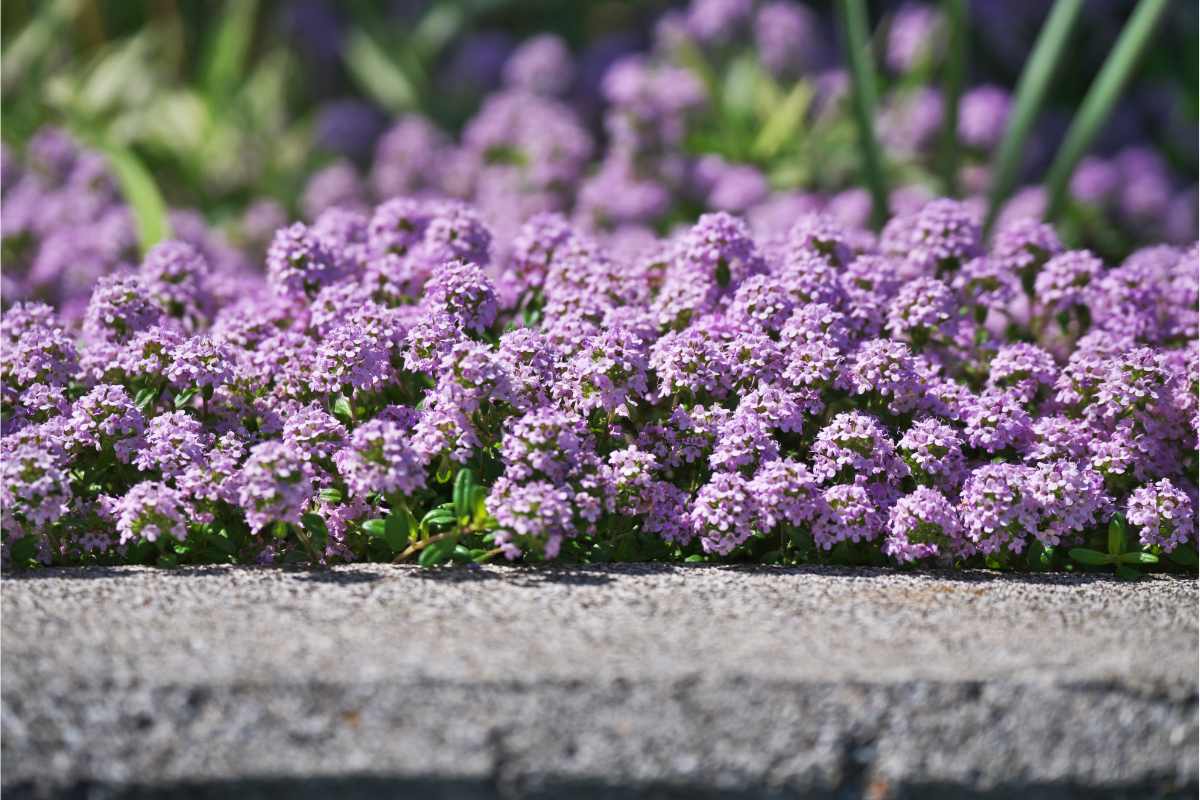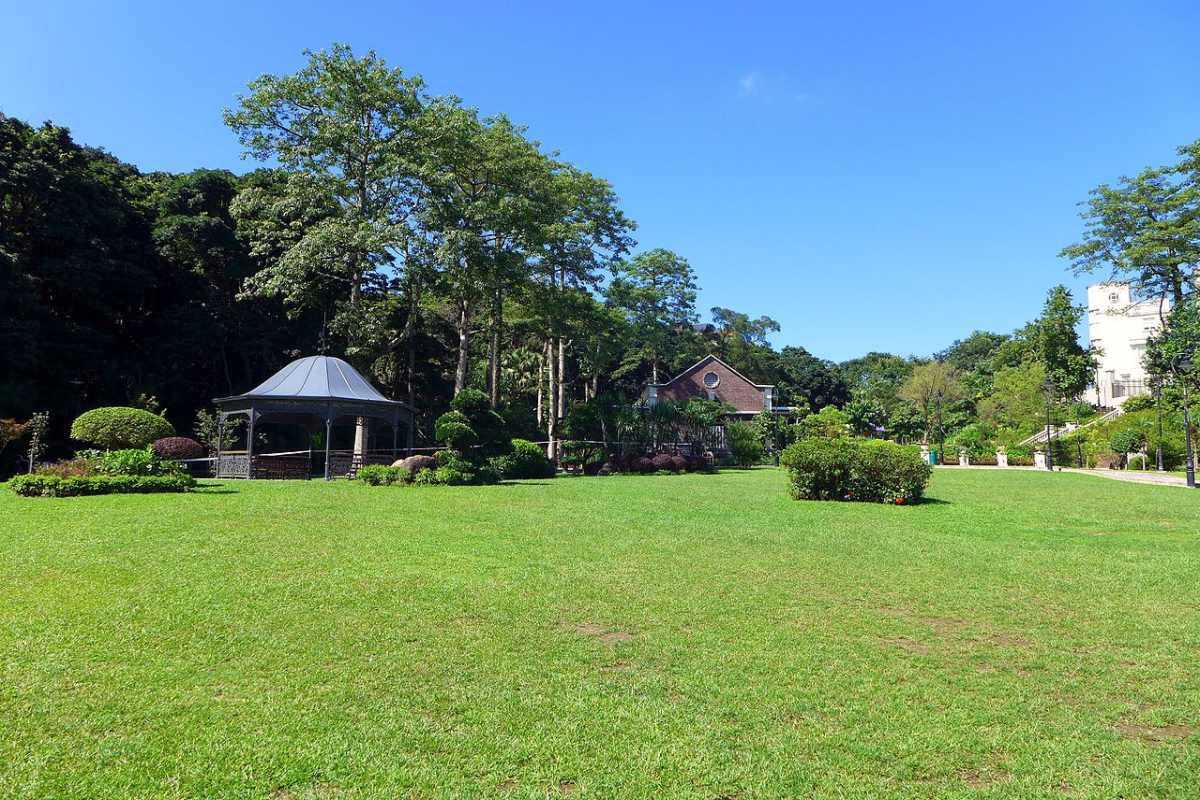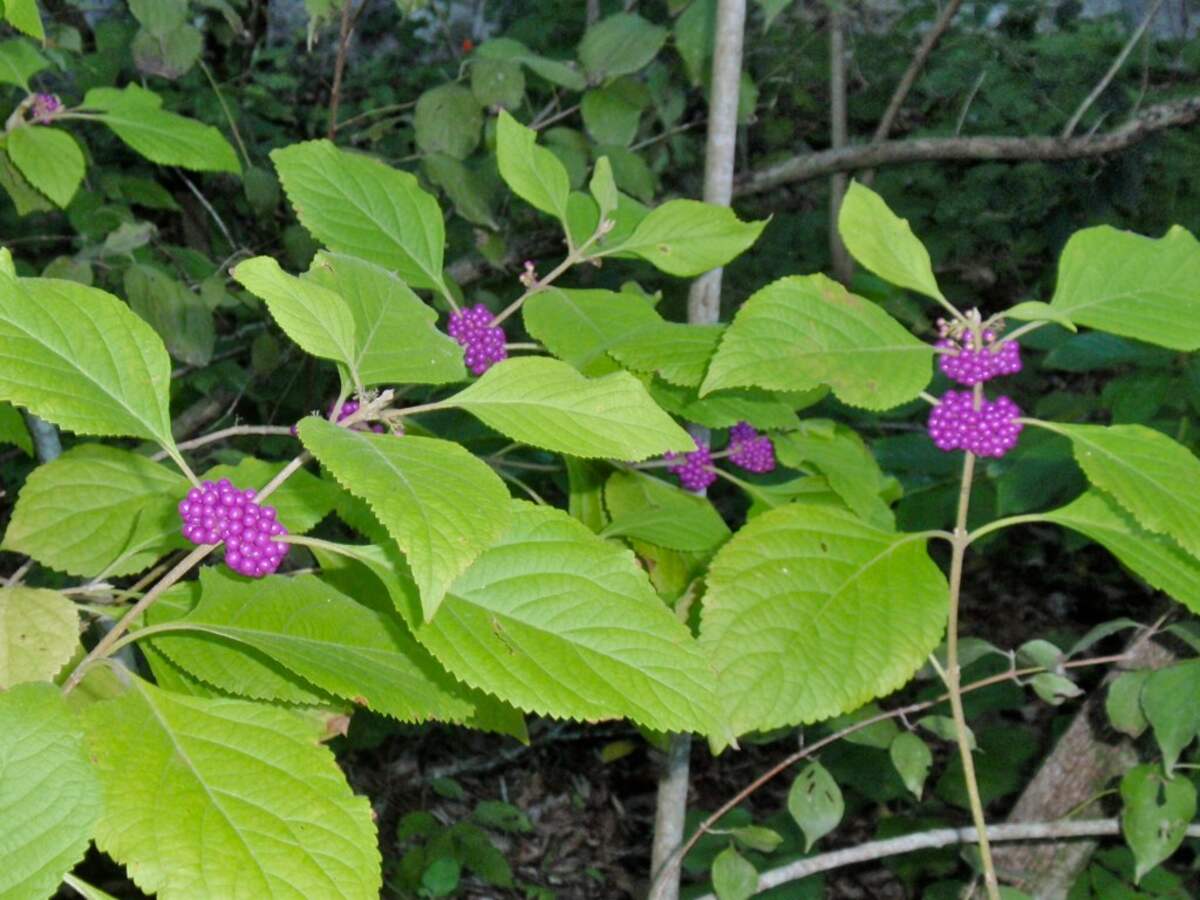
Native plants have become the rage these days, along with the buzzwords sustainability, biodiversity, and climate change. By creating a native plant garden, you, too, can get into the “green lifestyle.” If you’re done with all the maintenance, chemicals, and cost of maintaining a pristine yard, ask yourself, “Self? What are the best native plants for Rockwall, Texas?”
This article will explore the eight best native plants for Rockwall, Texas. Let’s dive in:
What are Native Plants?
Native plants have naturally grown and thrived in a specific region for a significant period, often thousands of years. These plants have adapted to the unique climate, soil, and light conditions, making them well-suited to their area.
Native plants can be classified into four categories based on their habitat: terrestrial (growing on land), aquatic (living in water), epiphytic (growing on trees or other plants), and lithophytic (growing on or in rocks). This article will concentrate on terrestrial (“land-loving”) plant material.
Native Ground Covers
Ground covers are a group of plants with a low-lying, creeping, or spreading habit. This growth habit makes them especially useful in landscaping to control erosion and as a solution for covering large areas of land while requiring little maintenance. Some ground covers are flowering, while others are evergreen.
Winecup (Callirhoe involucrata)
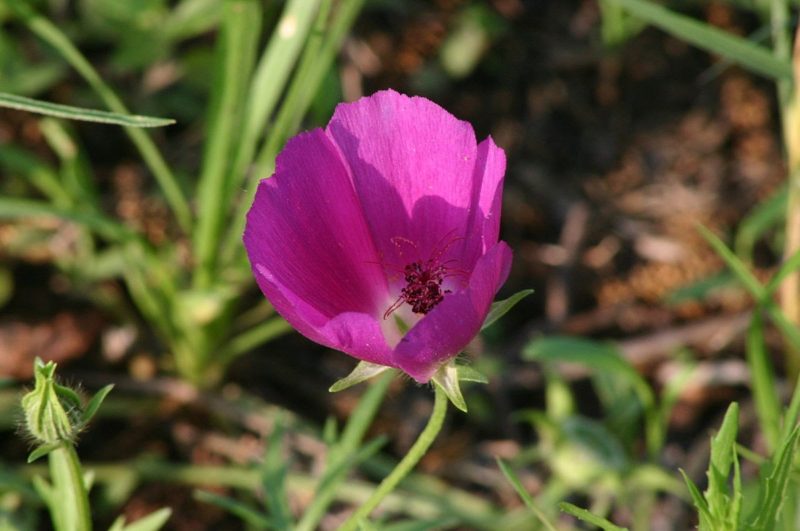
Also known as purple poppy mallows, these stunning wildflowers are a great option for ground cover in Rockwall. The deep purple cup-shaped blooms, sprawling stems, and foliage form a thick mat that adds color to any garden.
Winecup’s flowers have a unique feature — the flower petals open each morning and close each night, making them a beautiful addition to any outdoor space.
- Plant type: Groundcover
- USDA Hardiness zones: 4a-8b
- Sun: Full sun
- Soil: Well-draining rocky or sandy soils
- Duration: Perennial
- Fragrance: Insignificant
- Bloom time: March-June
- Water needs: Water only when soil is completely dry
- Mature height: 8-12 inches
- Potential hazards: Slugs love to snack on this plant, eating all the young shoots in spring.
- Maintenance: To prolong bloom time, remove dead flowers.
Texas Frogfruit (Phyla nodiflora)
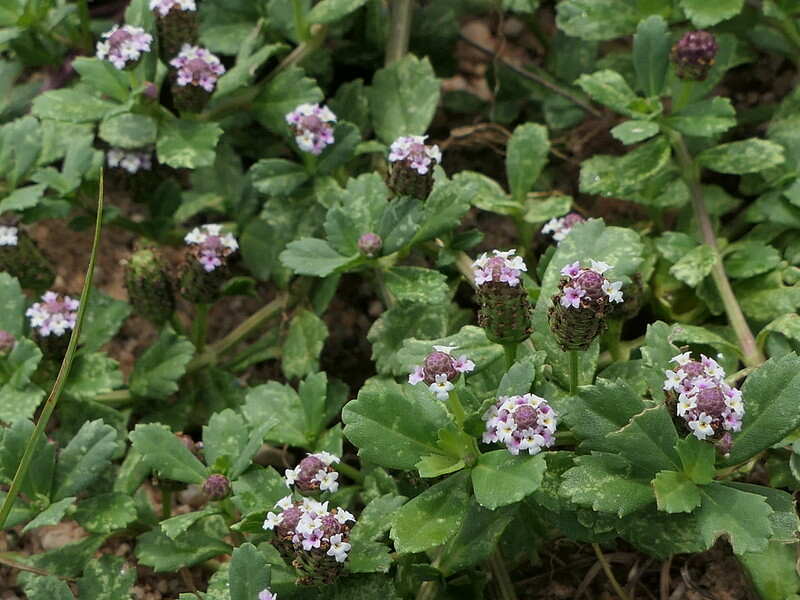
Ribbit… Ribbit… This groundcover was originally called “fog fruit” due to its low-growing habit and invasive qualities in freshly-hayed fields; it eventually evolved into “frog fruit” over time. Despite the misconception that the name is related to frogs, it is simply a mispronunciation of its original common name.
Texas frogfruit is a semi-evergreen ground cover that spreads vigorously and is a good host for butterfly larvae. This attractive plant is a rambler that loves to camp over boulders or hanging baskets’ edges and tolerates drought and flooding.
- Plant type: Groundcover
- USDA Hardiness Zone: 6-11
- Sun: Full sun, partial shade
- Soil: Poor drainage and saline soils; pH range is 6.1-7.8
- Duration: Perennial herb
- Fragrance: Musky smell that can be inhaled to treat colds and cough symptoms
- Bloom time: May-September
- Water needs: Water once a week during the summer. It’s pretty carefree.
- Mature height: 6 inches high
- Potential hazards: None
- Maintenance: Texas frogfruit goes dormant in the winter, so this is the best time to prune if it gets too dense or tangled.
Native Perennials
Rock Rose (Pavonia lasiopetala)

Sometimes, rebellious teenagers seek “rough places” to hang out. In the plant world, this shrub would be that rebel teen looking for the toughest spots to hang. Rock rose loves to grow on rocky and disturbed soils (that’s how it got its name).
During the spring and summer months, this plant produces beautiful pink hibiscus-like flowers that are known to attract butterflies. Due to its creeping, low-growing, spreading habit, rock rose is often used as a ground cover in landscaping projects.
- Plant type: Shrub
- USDA Hardiness zones: 8a-9b
- Sun: Full sun, partial shade
- Soil: Well-draining limestone soils
- Duration: Perennial
- Fragrance: Sweet scent of fruit and honey
- Bloom Time: The Native Plant Society of Texas (NPSOT) suggests bloom time as being in summer, but in the Rockwall area, bloom time is known to be spring to frost.
- Water needs: Water 1-2” of water per week only when the soil is dry to a depth of 2-4.”
- Mature height: 2-4 feet
- Potential hazards: Watering too much can lead to root rot.
- Maintenance: Cut back in late winter to prevent excessive growth.
Autumn Sage (Salvia greggii)
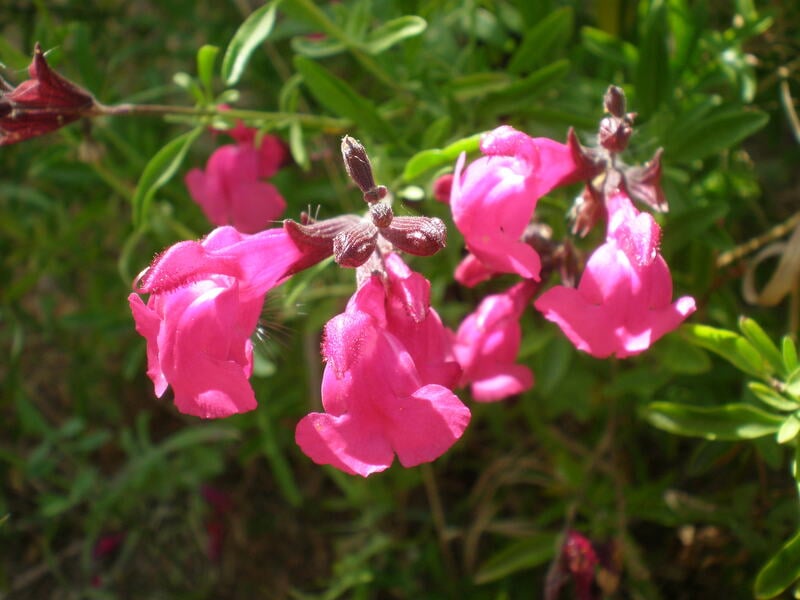
A popular landscape plant in the Southwest, Autumn Sage is delightful to use as a small, ornamental, flowering shrub in a perennial bed or as a low hedge. Its aromatic foliage quickens the senses, and its flowers will surely draw hummingbirds.
The color of autumn sage varies from area to area, with some regions dominated by red-blooming plants, others pink, orange, purple, and white, plus many shades in between.
- Plant type: Shrub
- USDA Hardiness Zone: 6b-9a
- Sun: Full sun
- Soil: Well-draining, fertile; soil pH slightly acidic to slightly alkaline (6.1-7.8)
- Duration: Perennial
- Fragrance: The minty scent is in the oils of the stem and leaf.
- Bloom time: Spring to frost
- Water needs: Don’t overwater! Salvia hates wet feet. Plants require only average watering — no more than 1 inch per week once established.
- Mature height: 2-3 feet high, spreads 2-3 feet
- Potential hazards: Salvia can be ingested like a drug and produce hallucinations similar to LSD.
- Maintenance: Trim or pinch tips continuously for nonstop blooming; otherwise, it will become leggy.
Native Shrubs
Mexican Buckeye (Ungnadia speciosa)
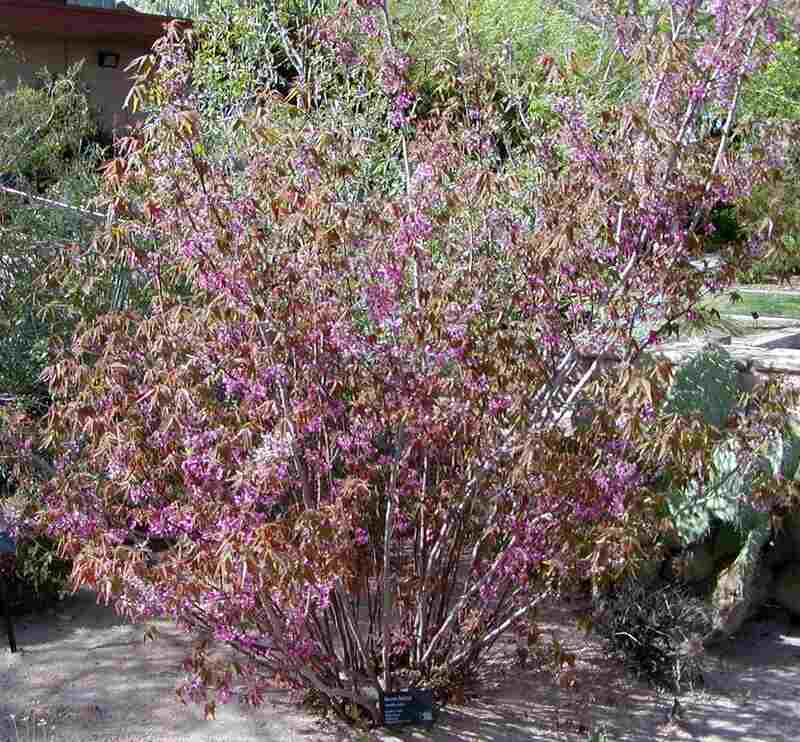
The Mexican buckeye is a versatile plant that can be grown as either a large shrub or a small tree, depending on how it is pruned. With its light gray or brown bark, this multi-trunked plant produces beautiful and fragrant bright pink flowers that are a favorite of honey bees and butterflies.
Remember playing with marbles as a kid? The Mexican buckeye tree produces round seeds used by children in West Texas as a playful alternative to marbles. The seedpods persist on the bare branches throughout the winter.
- Plant type: Shrub or tree
- USDA Hardiness Zone: 7-9a
- Sun: Full sun, partial shade
- Soil: Dry, rocky soils
- Duration: Deciduous
- Fragrance: Insignificant slight, pleasant fragrance
- Bloom time: Spring
- Water needs: When first planted, it should be given supplemental water to get established. After it is established, it becomes drought-tolerant and suitable for xeriscaping. It should have adequate drainage, but it hates wet feet.
- Mature height: 12-20 feet high, spreads 12-20 feet wide
- Potential hazards: Foliage and fruit are toxic to people, and deer won’t touch it.
- Maintenance: Proper pruning can determine if you want the shrub to look like a tree.
American Beautyberry (Callicarpa americana)
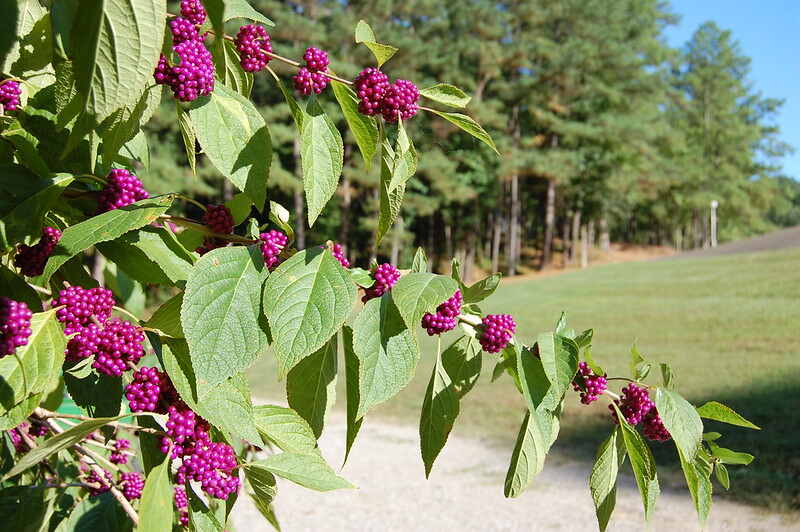
American beautyberry is an eye-catcher in the garden and one of the best native plants for Texas. This multi-stem shrub has exquisite violet to magenta berry-like fruit in autumn, and songbirds go nuts for those juicy berries. Humans can eat the medicinal-flavored berries too. The beautiful greenish-white flowers show themselves in June.
- Plant type: Deciduous shrub
- USDA Hardiness Zone: 7-11
- Sun: Full sun to partial shade
- Soil: Dry, acidic soil, loam, sand
- Duration: Perennial
- Fragrance: Citrus
- Bloom time: Flowers in June, berries by fall
- Water needs: Low (one inch per week)
- Mature height: 4-8 feet high
- Potential hazards: If you decide to eat the berries, don’t consume too many, as slight stomach discomfort can occur. They make better jam and jelly.
- Maintenance: Keep soil moist but not wet. This shrub will suffer from wet feet.
Native Trees
Blackgum (Nyssa sylvatica ‘Marsh’)
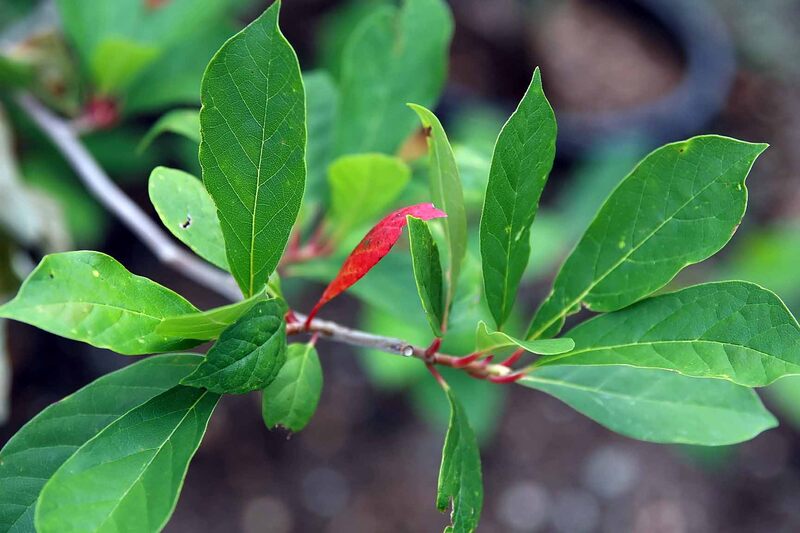
Blackgum, also known as tupelo or sourgum, is a majestic tree found in low wet woods, bottomlands, and pond peripheries. It can also thrive on dry, rocky wooded slopes and ravines. Blackgum is a good option if you want to create a wildlife habitat in your yard, as birds dine happily on the bluish-black fruit.
Note: Since it can grow to 100 feet depending on the climate, this tree might be best for larger yards and landscapes.
- Plant type: Deciduous tree
- USDA Hardiness Zone: 3-9
- Sun: Full sun to partial shade
- Soil: Moist, well-drained soil, pH is acidic
- Duration: Perennial
- Fragrance: None
- Bloom time: Insignificant small green-white flowers appear from April to May, flowers then give way to 1/2-inch long, blueish-black fruit that birds adore.
- Water needs: In the first three to four weeks after you plant the black gum tree, water it thoroughly.
- Mature height: 30-100 feet high, 20-30 feet wide (depends on site conditions)
- Potential hazards: Black gum dislikes to be transplanted due to a fleshy, non-fibrous root system. Poor thing — it’s also troubled by insect and disease problems.
- Maintenance: To increase this tree’s growth, add a slow-release fertilizer around the tree’s base. Don’t forget to saturate the roots by placing fertilizer 2’ beyond the tree canopy.
Texas Redbud (Cercis canadensis ‘Texensis’)
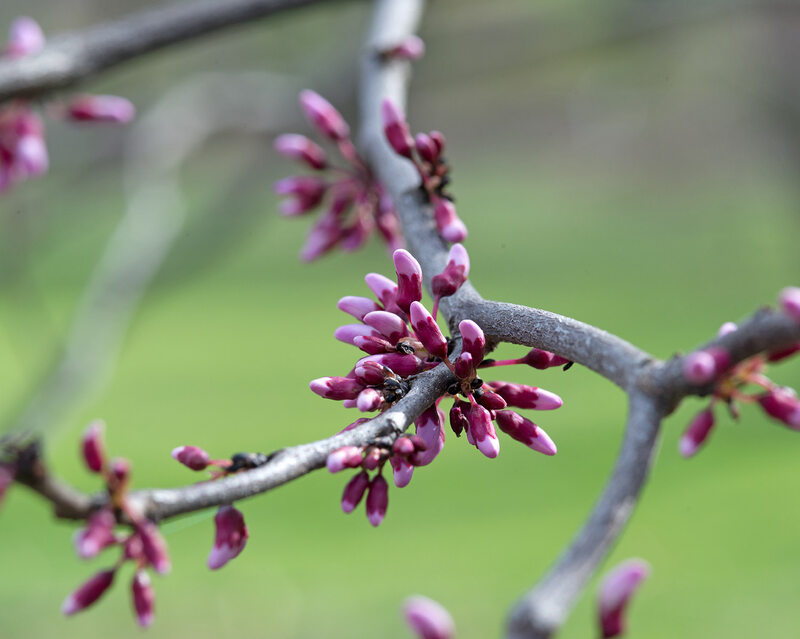
The Texas Redbud is a unique variety of the Eastern Redbud found in North America between the Appalachian and Rocky Mountains. This tree holds a special place in the heart of Oklahomans as it is the official state tree of Oklahoma.
The nuts of the Texas Redbud can be roasted and enjoyed as a tasty snack, and the edible flowers can be eaten raw or fried, adding a unique flavor to dishes. What sets this tree apart from its Eastern Redbud counterpart are its smaller, glossy leaves with slightly wavy edges and striking red seed pods.
- Plant type: Deciduous tree
- USDA Hardiness Zone: 5-9a
- Sun: Full sun to partial shade
- Soil: Clay, loam, sand, acidic, alkaline, well-drained soil, pH 5.5-7.8
- Duration: Perennial
- Fragrance: Sweet pea smell
- Bloom time: March-April flowering, purple berries in winter
- Water needs: Water at least twice a week for the first month and once a week for the first 2-3 months while the tree is being established.
- Mature height: 12-20 feet high, 12-20 feet wide
- Potential hazards: Verticillium wilt attacks and kills Redbuds. To reduce the effects, fertilize affected trees and prune out wilted branches.
- Maintenance: Excessive nitrogen application invites caterpillars and sucking pests. Prune trees regularly to remove overcrowded branches from areas around sidewalks.
How to Choose Native Plants for Your Rockwall Landscape
The most important axiom to remember is “Right Plant — Right Spot.”
Before choosing a plant for your garden or landscape, research its mature height and width. This will help you determine if the plant is a good fit for your available space and prevent it from outgrowing its surroundings.
No matter how well you care for a plant, if it’s not suited for the site, it won’t thrive. So take the time to choose the right plant for the right spot.
Here are some tips to keep in mind as you plan:
- Sun (full sun to deep shade)
- Water (quantity, quality, irrigation system or hand water)
- Wind exposure (Does the wind beat up your plants?)
- Extreme temperatures
- Type of soil (composition, drainage, compaction)
- Hardiness zone
- Existing plant material competition (sun and space)
- Low-lying areas that hold water (some plants love wet feet, others don’t)
Plant selection based upon aesthetics:
- Habit (the way it grows – upright, weeping, pyramidal, columnar, spreading, etc.)
- Evergreen or deciduous (holds onto its leaves or sheds them)
- Bloom times and bloom color
- Foliage (foliage shape, color, and texture)
- Winter interest (berries, seed pods, interesting branches)
- Benefits to wildlife (attracts hummingbirds, dragonflies, birds, and bees)
- Fall color
- Messy trees (Do you have the patience to clean up after your trees? They’ll drop leaves, bark, fruit, seed pods, etc.)
Where to Start
If all of this information is overwhelming, a great resource to start researching local native plants is the Lady Bird Johnson Wildflower Center. They have an excellent plant database with recommended species and plants for North Central Texas.
Another suggestion would be to visit your local garden center. Typically, plant nurseries are laid out with the same plants in the same area. So, for example, boxwood shrubs would have a designated area just for them. Redbud trees would have a specific spot for them. In those designated areas, the varieties of each species would then be separated further.
Benefits of Native Plants
The benefits of using native plants in your Rockwall landscape are legion. Here are a few:
- Preserve local wildlife: Wildlife plays a crucial role in maintaining the balance of our ecosystem. Native plants provide homes and food for various species and pollinators.
- Help the climate: Native plants are effective at storing carbon dioxide.
- Conserve water: Native plants are more drought-resistant, helping to conserve water.
- Are low maintenance: Once native plants are established, they don’t require as much maintenance as non-native plants.
- Exude beauty: Native plants in regions with four distinct seasons offer a stunning display of colorful flowers, fruits, and seeds throughout the year.
FAQ
The USDA Plant Hardiness Zone Map is a helpful tool for determining which plants will grow best in which regions of the United States. The map divides the country into 13 zones, each representing a 10-degree range based on that zone’s average annual minimum winter temperature.
Rockwall falls under Zone 8a, meaning the average annual minimum temperature ranges from 10 to 15 F. (If you are curious about Dallas and Fort Worth, they are in Zone 8, where the minimum average temperature range is between 10°F and 20°F.)
The American Horticultural Society (AHS) created the Heat Zone Map in the 1990s to complement the USDA Hardiness Zone Map. This map considers the number of “heat days” in a particular region when the temperature rises above 86 degrees F.
When selecting plants for your garden, choosing ones rated for this heat zone is essential, as plants rated lower may not survive the intense summer heat.
When To Call in the Professionals
If you are “getting lost in the weeds” trying to figure out the best native plants for your Rockwall property, contact one of Rockwall’s LawnStarter landscaping professionals. This simple decision of planting native plants can positively affect the environment and help preserve the natural ecosystem.
Once you’ve decided to add more native beauty to your Rockwall landscape, grab your lawn chair and head out to enjoy the live concert series at Lake Ray Hubbard, knowing you are now contributing to the “green scene.”
Main Image Credit: American Beautyberry / John Pavelka / Flickr CC BY 2.0


